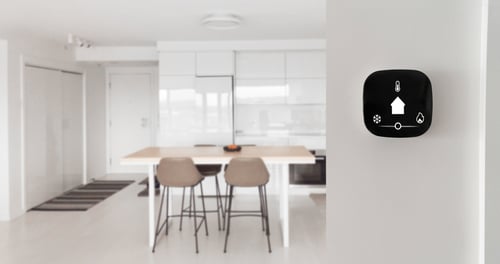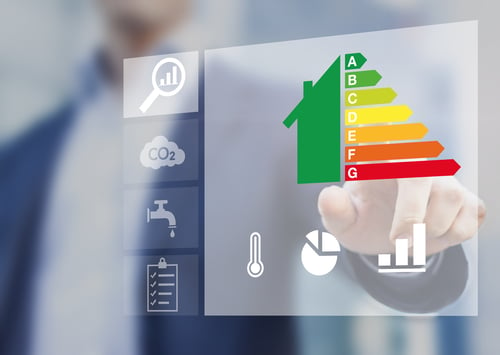Author: Editorial board

Developments in the HVAC industry: a conversation with Bertrand Buttin
The Covid-19 pandemic has been perceived at all levels of the heating, ventilation and air conditioning (HVAC) industry and has brought with it an acceleration of some changes already underway. In particular, customers’ demand has changed and, as a result, the operations and system design by HVAC manufacturers and distributors have changed too. Understanding and pursuing customer needs is an approach that helps create new business opportunities that look to cutting-edge technology solutions.
We interviewed Bertrand Buttin, Expert and Consultant of the HVAC electromechanical and electronic components, to try to understand how the HVAC industry has developed in recent years and what innovations to focus on for the future of the industry.
Index:
Click on the button below and download the free infographic to find out more about the heating and air conditioning trends of the future.
Developments in the HVAC sector
Good morning Mr Buttin, given your experience and background in companies in the HVAC sector, can you tell us how has the sector changed in recent years?
The HVAC sector is in continuous expansion. In recent years, we have seen an increase in competition between companies in the sector following the entry of new players such as Eastern Europe and China. Each company is trying to cope with the issue of lowering prices and managing the cost of raw materials in order to keep its business going. This situation has given rise to a trend towards enhancing the value of their products, which is reflected in the diversification of their offers. Starting with Original Equipment Manufacturers, the industry is increasingly focusing on innovation and technology to provide higher quality equipment.
What are the trends in the sector?
One of the trends of the moment is undoubtedly energy saving: this is not just a trend, but an essential requirement for companies in the sector. Europe has led the way in terms of energy savings by issuing the ERP Directive, which regulates clear and visible energy labelling for all devices that generate heat for hot water and heating.
Another trend, resulting from the changes in recent years, is sustainability: environmental change and global warming are real issues that are attracting people's attention today. The new generation of consumers is increasingly informed and attentive to the environmental impact of the product they buy. Consumers' perceptions of products that cost more but are at the same time 'sustainable' have changed. Therefore, industries and companies need to do something concrete to address these issues. I believe this is a period of intense activity for our industry, an opportunity to create an innovative approach and also an additional way to differentiate the European manufacturing industry.
Looking at the developments in recent years, another trend that emerges is connectivity: for the younger generation, connectivity is essential in any situation. In our industry, too, this is an issue to keep in mind when developing HVAC applications. Connectivity is a 'revolution' with implications for many aspects of product design.

What challenges do industry professionals face?
Basically, industry stakeholders have to face reality: in the coming years, the available electricity supply will decrease along with the reduction of gas supply and consequently the cost of energy will increase, but renewable energies will continue to grow. So, one of the biggest challenges for professionals in the sector is not just a ‘sustainability issue’, but an ‘economic issue’ where you have to realise that designing a sustainable solution today at a higher cost is an investment in the future. The real challenge is to find a balance and an innovative proposal to look to the future, overcoming these difficulties and taking advantage of new opportunities.
Another major challenge resulting from the Covid-19 emergency is the problem of component and raw material supplies. This is a very sensitive issue that involves all companies in the sector and leads to another issue: inflation. This is a situation that will continue for the next few years and which the manufacturers in the sector need to think about strategically.
Technology, sustainability and energy saving are some of the keywords in reference to the HVAC industry: how do you combine the need for innovation with the need for increasingly greater sustainability?
I think the level of R&D is becoming increasingly sophisticated. The companies in the sector need to do more research and study to offer new solutions using recycled, recyclable, and sustainable materials. Again with a view to reducing waste, it is necessary to develop solutions that can be easily repaired, without the need to completely replace the equipment. This is not just about sustainability, but a holistic approach to corporate social responsibility. Some Northern European companies are already putting this into practice. For the future, it will certainly be essential to be able to mix a 'cost approach' with a 'sustainable approach' and to show that the research and development department is constantly working in this direction in a dynamic and flexible way. I think it is important for suppliers and component manufacturers to listen to the needs of consumers and to be proactive with innovative solutions. Companies should focus on developing comfort management solutions, which increasingly contribute to energy savings.

SLIM’s proposal for the HVAC sector
How did you know the SLIM offer for the Heating, Ventilation and Air Conditioning sector?
I had the opportunity to collaborate with SLIM when I was Group Sales Director for the previous company where I worked, a leading company in the production of components for thermal control, safety, and water heating systems.
Our first encounter dates back to 1995 when we approached the company for the supply of some standard components. I think that SLIM is an industry leader in the production of lighting components for the HVAC sector. In particular, SLIM provides lighting components and standard electromechanical components for water heating control thermostats that boast the quality of Made in Italy products.
Nowadays, with my company ALTICCO SAS, I put the skills that I have acquired and gained over the years in the HVAC field at the service of component manufacturers and OEMs, in order to provide consultancy for the development of systems of the HVAC industry and commercial representation.
The consulting will cover strategy, marketing, and sourcing for OEMs, and the trade representation will be for component manufacturers selling to the HVAC industry, among others. There will be a special focus helping to develop green strategies and products as described here above.
We would like to thank Mr Buttin for this valuable feedback on developments in the HVAC sector.
At SLIM, we work alongside companies in the HVAC sector with the development of standard and customised light signals. We are available for the development of customised solutions with aesthetic purposes for the latest generation of heating and air conditioning systems.
If you would like to know more about our lighting proposal for this industry, click on the button below and we will be happy to help you.
